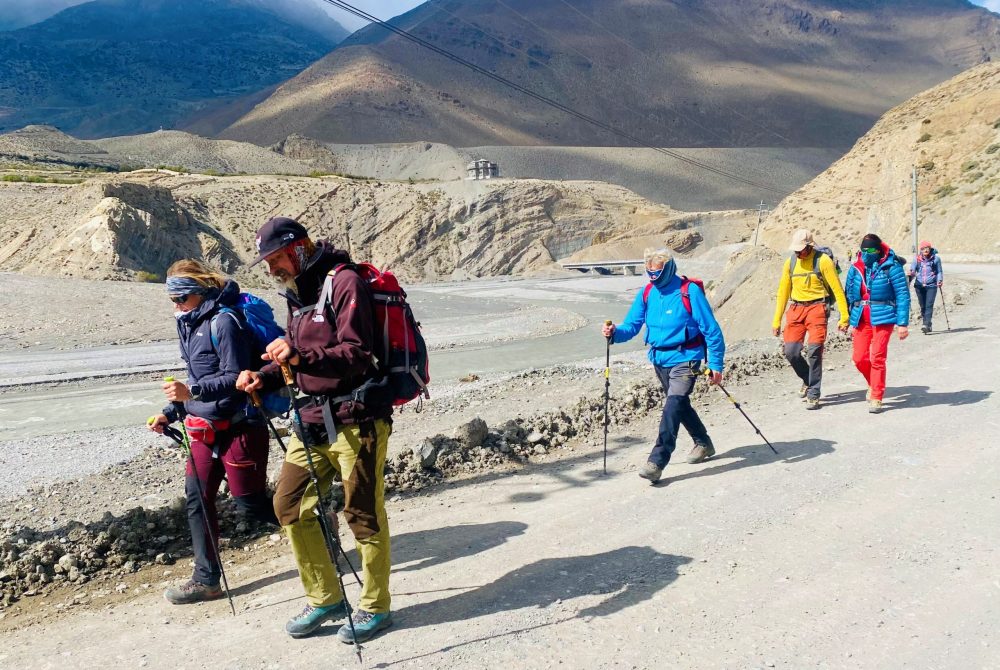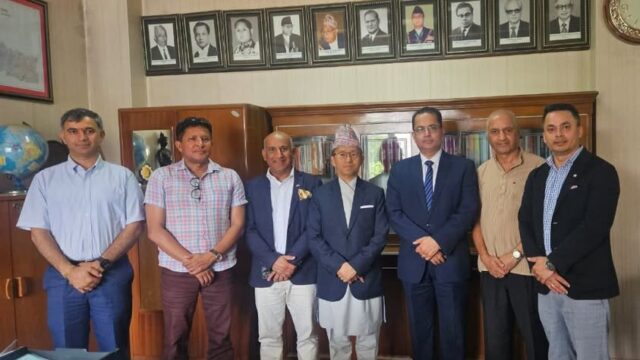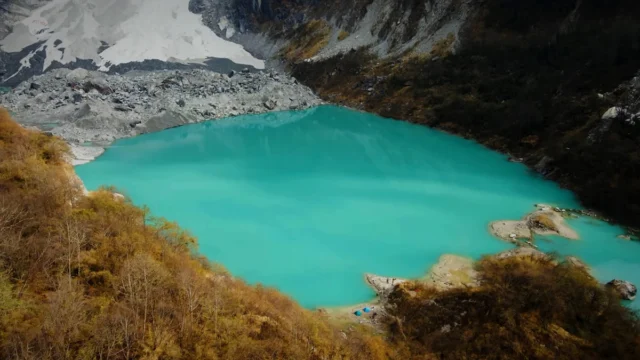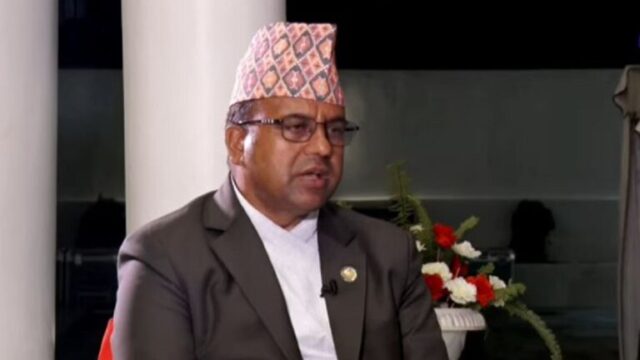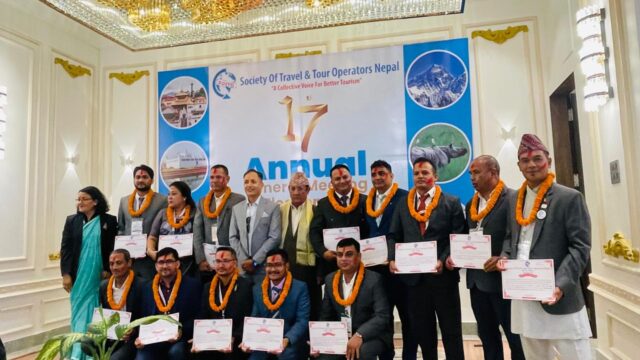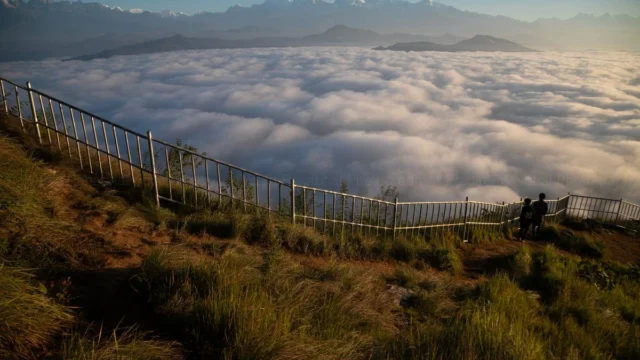As the monsoon season nears its end, clear blue skies are revealing the majestic Himalayan ranges, glistening like silver. With major festivals such as Dashain, Tihar, and Chhath approaching, Nepal’s markets are becoming increasingly vibrant. This time also marks the beginning of the main tourist season, causing a surge in activity across the tourism sector. The clear weather has further enhanced the charm of the Kathmandu Valley, offering breathtaking views of the surrounding hills and northern Himalayan ranges, adding to the festive atmosphere.
Binayak Shah, President of Hotel Association Nepal (HAN), noted an increase in both domestic and international tourist activities around the Kathmandu Valley and key destinations. “The weather is perfect for domestic tourism, and many people are taking advantage of the holiday season to explore different destinations. The favorable weather has also added positive momentum to the tourism sector,” he stated.
According to HAN, Nepal’s hotel infrastructure is now capable of accommodating 3.5 million tourists, with the number of star-rated and chain hotels continuing to grow. Autumn is also considered an ideal season for trekking, with popular routes such as Annapurna, Langtang, Khumbu, Mustang, Manang, and Khaptad attracting significant numbers of both local and foreign tourists. Additionally, this season sees climbers flock to peaks like Manaslu, drawn by the favorable climbing conditions.
Deepak Raj Joshi, CEO of the Nepal Tourism Board (NTB), highlighted the optimistic outlook for the tourism sector as the festival season draws near. “The weather is becoming more favorable for tourism, and with the start of the tourist season, the sector is gaining momentum,” he said. He also emphasized the need for policy reforms and promotion to prioritize the tourism industry, which he believes will further boost business confidence.
NTB has announced an aggressive international marketing campaign aimed at increasing foreign tourist arrivals. “Our primary focus is aggressive marketing promotion, not only targeting existing markets but also identifying and promoting new destinations,” Joshi added. The board plans to work closely with the private sector to revitalize tourist activities.
Looking ahead to 2024, Joshi expressed the goal of restoring tourist arrival numbers to pre-pandemic levels, with the board designing effective promotional programs. Significant investments have been made in hotel and tourism infrastructure, and hotel bookings for the current tourist season are reported to be strong.
The Nepal Association of Tour and Travel Agents (NATTA) President, Kumar Mani Thapaliya, also confirmed increased activity within the tourism sector, noting that travel bookings have surged with the start of the tourist season. “This has given a boost to the tourism business,” he said, adding that strengthening Nepal Airlines and improving the availability of affordable air services would help increase tourist arrivals.
The government has set an ambitious target to bring in 1.6 million foreign tourists during the current fiscal year, with a long-term plan to attract 3.5 million tourists annually by 2032 as part of its “Tourism Decade” initiative. In 2023, Nepal welcomed 1,014,882 foreign visitors, and by the first eight months of 2024, 720,334 tourists had already visited the country.
Clear weather has also led to increased activity in popular hill stations like Dhulikhel, Nagarkot, Chandragiri Hills, Jarshingh Pauwa, Sundarijal, Shivapuri, and Chobhar. Religious and archaeological sites, including Pashupatinath, Swayambhunath, Changunarayan, and Dakshinkali, have seen a surge in pilgrims and visitors. Meanwhile, key tourist hubs such as Thamel, Durbar Marg, Basantapur, Patan, and Bhaktapur Durbar Squares are attracting both domestic and international tourists.
Autumn is not only a prime season for trekking but also for mountaineering. A large number of trekkers have set off for various destinations, aided by the favorable weather. According to the Department of Tourism, 308 climbers from 28 groups have already received permits to climb Manaslu, while others are preparing for Makalu, Dhaulagiri, and various other peaks. September, October, and November are considered the peak tourist months in Nepal.
Meteorologist Sudarshan Humagain of the Department of Hydrology and Meteorology confirmed that the monsoon is gradually retreating. The monsoon season typically begins around June 13 and ends by October 2, although this year it began slightly earlier, on June 10.
General Secretary of the Nepal Mountaineering Association, Mohan Lamsal, remarked that tourist activity has significantly increased, with recent clear weather making travel and sightseeing more enjoyable. “Tourism activity has picked up well, and despite some weather disruptions earlier, the clear skies in recent days have facilitated the movement of tourists,” he said.
Mountain flights, especially scenic flights over the Himalayas, have also seen a rise in demand as October and November are considered the best months for such experiences. Buddha Air spokesperson Dipendra Kumar Karn confirmed that the attraction for mountain flights has grown, especially among international tourists eager to witness the spectacular Himalayan views.
Tourism industry professionals are optimistic that with effective marketing of international destinations, improved operation of Nepal’s two international airports, and strengthening of the national flag carrier, Nepal Airlines, the tourism sector, which had been slowed by the COVID-19 pandemic, will return to full strength.
